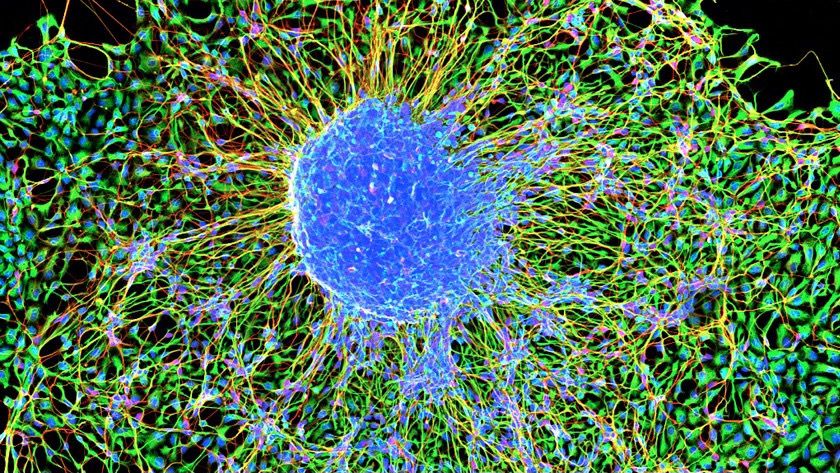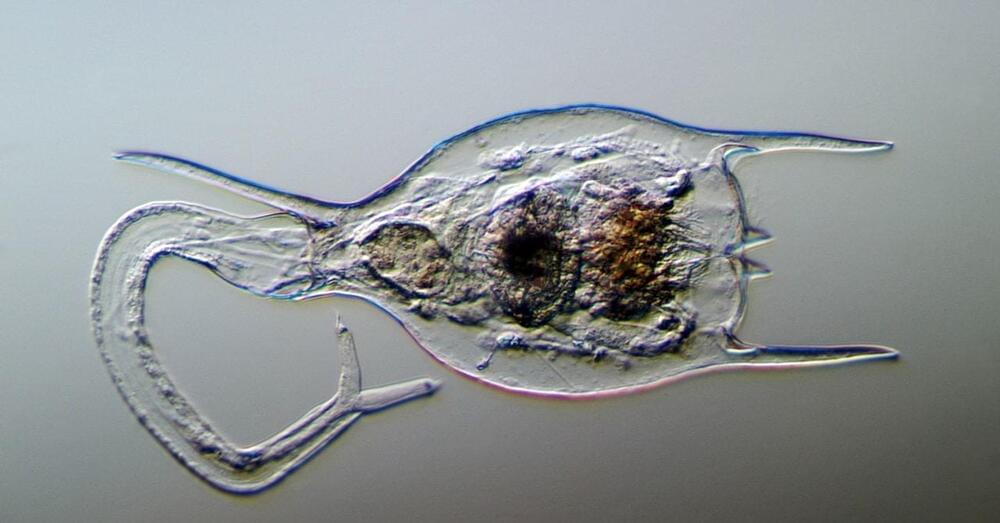Page 5256
Jun 28, 2021
Meet Amazon’s robots
Posted by Derick Lee in categories: health, media & arts, robotics/AI

According to recent Occupational Safety and Health Administration data, workers at Amazon fulfillment centers were seriously injured about twice as often as employees in other warehouses. To improve workplace safety, Amazon has been increasing its investment in robotic helpers to reduce injuries among its employees. With access granted for the first time ever, “Sunday Morning” correspondent David Pogue visited the company’s secret technology facility near Seattle to observe some of the most advanced warehouse robots yet developed, and to experience how high-tech tools are being used to aid human workers.
“CBS Sunday Morning” features stories on the arts, music, nature, entertainment, sports, history, science and Americana, and highlights unique human accomplishments and achievements. Check local listings for CBS Sunday Morning broadcast times.
Jun 28, 2021
AI learns to predict human behavior from videos
Posted by Dan Kummer in categories: information science, robotics/AI, transportation
An outstanding idea, because for one there has been a video/ TV show/ movie, etc… showing every conceivable action a human can do; and secondly the AI could watch all of these at super high speeds.
Predicting what someone is about to do next based on their body language comes naturally to humans but not so for computers. When we meet another person, they might greet us with a hello, handshake, or even a fist bump. We may not know which gesture will be used, but we can read the situation and respond appropriately.
In a new study, Columbia Engineering researchers unveil a computer vision technique for giving machines a more intuitive sense for what will happen next by leveraging higher-level associations between people, animals, and objects.
Continue reading “AI learns to predict human behavior from videos” »
Jun 28, 2021
Harvard Scientists Pinpoint ‘Ground Zero’ of Aging in Mouse Embryo Study
Posted by Dan Kummer in categories: bioengineering, life extension
In 2016, researchers at the Salk Institute showed that activating certain genes associated with embryonic development could “reprogram” the age of cells and boost the age of mice. Last year, they even managed to use the process to restore vision in old mice.
But the natural “reprogramming” described in the new Harvard study is unlikely to be exactly the same and may be far more comprehensive as it resets cellular age to ground zero, rather than simply reversing it by a few years.
Now that they know when this process happens, the researchers hope they can discover what the actual mechanism is, how similar it is to artificial cellular programming, and whether it can be induced in normal adult cells to rejuvenate them. That’s likely to be a long road, but could eventually lead to major breakthroughs in longevity science.
Jun 28, 2021
Video Game Voice Actors Alarmed
Posted by Shane Hinshaw in categories: entertainment, information science, law, robotics/AI
Part of the problem mirrors the rise of automation in any other industry — performers told Input that they’re nervous that game studios might try to replace them with sophisticated algorithms in order to save a few bucks. But the game modder’s decision also raises questions about the agency that performers have over their own voices, as well as the artistry involved in bringing characters to life.
“If this is true, this is just heartbreaking,” video game voice actor Jay Britton tweeted about the mod. “Yes, AI might be able to replace things but should it? We literally get to decide. Replacing actors with AI is not only a legal minefield but an utterly soulless choice.”
“Why not remove all human creativity from games and use AI…” he added.
Jun 28, 2021
New study disputes the theory of aliens living in the clouds over Venus
Posted by Atanas Atanasov in category: alien life
If microbes live in the Venusian skies, they must be able to survive with far less water than any known life found on Earth.
If there are microbes living in the Venusian skies, they have evolved to survive with far less water than any known life on Earth, a new study suggests.
Jun 28, 2021
This Powerful Tidal Turbine Will Power 2,000 Homes in the UK
Posted by Kelvin Dafiaghor in category: futurism

Sorry, we’re having trouble playing this video.
Learn More.
Continue reading “This Powerful Tidal Turbine Will Power 2,000 Homes in the UK” »
Jun 28, 2021
Scientists obtain magnetic nanopowder for 6G technology
Posted by Quinn Sena in categories: chemistry, internet
Material scientists have developed a fast method for producing epsilon iron oxide and demonstrated its promise for next-generation communications devices. Its outstanding magnetic properties make it one of the most coveted materials, such as for the upcoming 6G generation of communication devices and for durable magnetic recording. The work was published in the Journal of Materials Chemistry C, a journal of the Royal Society of Chemistry.
Iron oxide (III) is one of the most widespread oxides on Earth. It is mostly found as the mineral hematite (or alpha iron oxide, α-Fe2O3). Another stable and common modification is maghemite (or gamma modification, γ-Fe2O3). The former is widely used in industry as a red pigment, and the latter as a magnetic recording medium. The two modifications differ not only in crystalline structure (alpha-iron oxide has hexagonal syngony and gamma-iron oxide has cubic syngony) but also in magnetic properties.
In addition to these forms of iron oxide (III), there are more exotic modifications such as epsilon-, beta-, zeta-, and even glassy. The most attractive phase is epsilon iron oxide, ε-Fe2O3. This modification has an extremely high coercive force (the ability of the material to resist an external magnetic field). The strength reaches 20 kOe at room temperature, which is comparable to the parameters of magnets based on expensive rare-earth elements. Furthermore, the material absorbs electromagnetic radiation in the sub-terahertz frequency range (100−300 GHz) through the effect of natural ferromagnetic resonance. The frequency of such resonance is one of the criteria for the use of materials in wireless communications devices—the 4G standard uses megahertz and 5G uses tens of gigahertz. There are plans to use the sub-terahertz range as a working range in the sixth generation (6G) wireless technology, which is being prepared for active introduction in our lives from the early 2030s.
Jun 28, 2021
See the Highest-Resolution Atomic Image Ever Captured
Posted by Quinn Sena in categories: biotech/medical, food, genetics
Scientists develop the first CRISPR-Cas9-based gene drive in plants which may breed crops better able to withstand drought and disease.
Scientists achieved a record level of visual detail with an imaging technique that could help develop future electronics and better batteries.
Jun 28, 2021
Scientists Find Ancient Critters Alive After 24,000 Years in Permafrost
Posted by Shane Hinshaw in category: futurism
The microscopic freshwater-dwelling rotifer is known for being a hardy little creature, but surviving 24000 years in a deep freeze is legendary no matter how you cut it.
The hardy rotifer can live through all manner of conditions, but this is a historic feat even for this tiny creature.
















